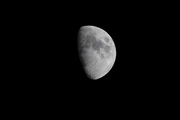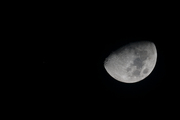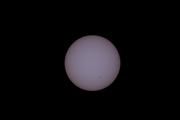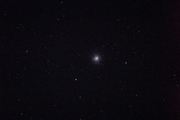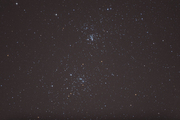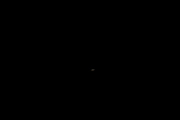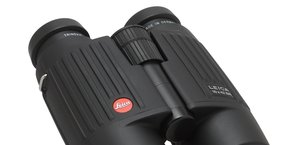Sky-Watcher BKP 150750EQ3-2 - telescope review
6. Summary
Pros:
- rich accessory kit
- primary mirror with a diameter of 153 mm gives you plenty of opportunities to make many interesting observations,
- good mobility of the set,
- dimensions which make balcony observations possible,
- parallactic mount gives you an opportunity to try your hand at astrophotography,
- huge possibilities of extension,
- good price/quality ratio.
Cons:
- kit eyepieces are weak,
- an aluminum tripod won’t damp down high magnitudes vibrations so efficiently as heavier tripods with steel legs,
- plastic knobs to set the mount aligned in azimuth can be damaged if you are not careful,
- parallactic mount is a bit trickier to manage than a dobsonian mount or an alt-azimuth so the device might be a bit difficult to use by the smallest amateurs of astronomy.
The tested telescope is undoubtedly a great device if you begin your adventure with astronomy observation. It provides significantly better pictures than smaller “toy” telescopes, offered on different auction sites. It can be a device which can be extended so it allows you to develop your hobby – adding a motor drive, a polar finder scope, a film to observe the Sun, eyepieces, in 1.25” and 2” standards. Its dimensions are just bordering full mobility limit (8” tube is noticeably heavier and bigger) so it gives you the possibility of taking it under dark sky (if you don’t live under it).
The basic set you get in the box is really enough to conduct your first observations. The eyepieces provide you 30 and 75x magnification and after using the Barlow lens – 60 and 150x. Magnification ratios from 30 to 150x are exactly those you should get in a telescope of this type. It’s worth remembering that with a piece of equipment at the lowest price point you shouldn’t use magnification ratios higher than the diameter of the eyepiece in millimeters (in this case using magnification ratios significantly bigger than 150x would be really pointless).
Please Support UsIf you enjoy our reviews and articles, and you want us to continue our work please, support our website by donating through PayPal. The funds are going to be used for paying our editorial team, renting servers, and equipping our testing studio; only that way we will be able to continue providing you interesting content for free. |
- - - - - - - - - - - - - - - - - - - - - - - - - - - - - - - - - - - - - - - - - - - - - - - -
The problem is that standard eyepieces are, in fact, the weakest link of our set and using them with the weak Barlow lens can make our experience even more problematic. Apart from that if we buy a telescope with an eyepiece focuser 2 inches in diameter we do it just because we want to use it. In order to make use of the potential of our optical tube one of the first things that should be done is buying additional eyepieces. A good focuser almost begs for a wide angle 2” eyepiece with the focal length of 30-35 mm which will give you a 20-30 magnification, a wide field of view reaching over 3 degrees, which is perfect for sweeping the Milky Way, admiring the biggest nebulae and galaxies along with bright comets; you can even hunt for telescopic meteors.
The next thing you should do is taking care of a good image quality and bigger magnifications observation comfort. Combining the kit 10 mm eyepiece with the Barlow lens is quite risky for three reasons. Firstly that eyepiece is characterized by short eye relief (on the level of just several mm), secondly, joined with the Barlow it gives you an image of moderate quality at most, thirdly, its field of view is narrow. All these drawbacks can be eliminated by purchasing another eyepiece with a focal length of 5-6 mm (then the magnification will be 125-150 times, perfect for observation of planets, the Sun and the Moon), the eye relief on the level of 15-20 mm and the field of view of 60-80 degrees. It is not a cheap purchase but definitely worth considering. A solar filter filter is much cheaper and also worth buying, a variant for unaided visual observations (filtering the light better) and that for photography. As we’ve already mentioned, the Sun is near its peak of activity so it is a very interesting observation and photography object. For both purposes the tested telescope will be perfectly suited.
Sample shots
Some more remarks about sample shots. In the case of astronomy equipment you encounter even more problem than you do when you test lenses. Our policy is such that we show raw frames, reflecting the real possibilities of a tested device, without the influence a skilled professional can have while processing the photos digitally. In astrophotography it is even more significant. Photographs which you can find on the Internet are usually heavily processed, often being a result of not one but several or even more than a dozen of expositions, taken during more than one night with different filters. The quality of optical equipment is in their case as important as the right edition and the skills of a photographer and a person processing the photos. In our tests we will try to show several raw photos so our Readers can see what kind of material they are likely to get at the beginning.
You must remember, though, that some telescopes can’t be used for astrophotography so showing photos in some cases doesn’t make sense. We deal with exactly such a case here – few people would use the Sky-Watcher 150/750 in astrophotography without a coma corrector so all photos, shown below were made using that device. Additionally, these photos have been taken with the previous version of this telescope, which optically is the same as the one, tested by us here. After publishing several other telescope tests we will try to standardize somehow the system of showing sample shots.
Delta Optical Company




